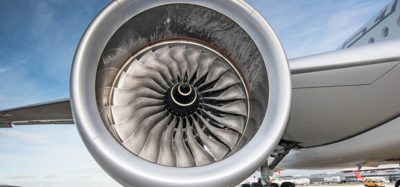Passenger numbers at UK airports increase for the third year in a row
- Like
- Digg
- Del
- Tumblr
- VKontakte
- Buffer
- Love This
- Odnoklassniki
- Meneame
- Blogger
- Amazon
- Yahoo Mail
- Gmail
- AOL
- Newsvine
- HackerNews
- Evernote
- MySpace
- Mail.ru
- Viadeo
- Line
- Comments
- Yummly
- SMS
- Viber
- Telegram
- Subscribe
- Skype
- Facebook Messenger
- Kakao
- LiveJournal
- Yammer
- Edgar
- Fintel
- Mix
- Instapaper
- Copy Link
Posted: 13 March 2014 | The Civil Aviation Authority | No comments yet
New figures published by the Civil Aviation Authority reveal 2013 saw UK airports enjoy growing passenger numbers for the third consecutive year…


New figures published by the Civil Aviation Authority (CAA) today reveal 2013 saw UK airports enjoy growing passenger numbers for the third consecutive year.
In total, UK airports handled 228 million passengers during 2013, an increase of 3.5% (7.8 million) on 2012.This growth continues the recovery started in 2011 following three years of falling passenger numbers. Passenger numbers for 2013 were 8.5% above 2010 levels (210 million passengers), although still 4.8% below 2007’s peak of almost 240 million passengers.
Commenting on the numbers, Iain Osborne, Director of Regulatory Policy at the CAA, said:
“Our figures show the strength of underlying demand for air travel, which picked up well in advance of the general economy. Solid growth in UK GDP may mean that passenger numbers continue to grow healthily. This is happening despite a shortage of runway capacity in the South East, as for the time being airlines operating bigger and fuller aircraft is allowing passenger growth to outstrip growth in numbers of flights.
“The prospect of growth underlines how important it is for aviation to tackle its environmental impacts – notably, reducing aircraft noise and carbon emissions. Addressing these issues is vital if aviation is to grow.”
Key statistics
- At the London airports – Heathrow, Gatwick, Stansted, Luton, London City and Southend – the increase was 3.5% to 140 million passengers. Heathrow, Gatwick London City and Southend each handled their highest ever annual total: 72.3 million passengers used Heathrow 3.4% more than in 2012, 34.2 million (3.5% more) used Gatwick, 3.4 million (12% more) used London City and Southend grew 57% from 617,000 to 970,000 passengers in the year. Luton grew by 0.8% and, after five years of declining passenger numbers, Stansted grew by 2.2% to 17.8 million.
- At other UK airports outside London, traffic rose by 3.5% to 88.7 million passengers. All airports with over a million passengers per year saw increases, with the exception of Liverpool and Belfast International, which saw declines of 6.1% and 6.7% respectively. Manchester saw the largest absolute rise of 1 million passengers (5.2%) to 20 million.
Destinations
The majority of UK airport passengers (137 million) were travelling to or from geographical Europe – representing an increase of 4.1% from 2012. Within this, the largest absolute increase was in passengers travelling to and from Spain (up by 1.6 million, an increase of 4.8%), while the largest fall in passengers travelling to and from an individual European country was Cyprus, where numbers fell by 7.2% (0.2 million).
There was a 0.7% (0.1 million) increase in passengers on flights to and from North America, to 20.6 million in 2013. Passengers travelling to and from the remaining international destinations (outside Europe and North America) totalled 31.6 million in 2013, an increase of 4.4% on 2012. Of these, the two countries with largest absolute increases were for passengers travelling to and from the UAE (689,000) and India (238,000). Egypt and Kenya registered the largest absolute declines in passenger numbers with 97,000 and 85,000 passengers respectively.
In 2013, 20 million passengers took UK domestic flights, representing an increase of 2.2% on 2012. This was the first yearly increase in domestic passenger numbers since this segment peaked at 25 million in 2005.
Passenger types
Provisional data from the CAA’s 2013 passenger survey, at the UK airports surveyed in both 2012 and 2013 (Heathrow, Gatwick, Stansted, Luton, London City, Manchester, Birmingham and East Midlands), shows that business passenger numbers increased by 1%, holiday passengers increased by 2.6% and passengers travelling to visit friends and relatives (VFR) increased by 6.6% in 2013.
During 2013, business passengers accounted for 22% of total passengers, holiday passengers for 44% and VFR passengers for 34%. In 2013, inbound passenger segments – those passengers who are not resident in the UK – grew faster than outbound ones: outbound business passengers fell by 1% whereas inbound business grew by 4.1%; outbound holidays grew by 1.4% versus 4.9% on inbound holidays; outbound VFR increased by 3.6% whereas inbound VFR grew by 9.9%.
Airlines
A continuing trend from previous years is the decline in passenger numbers on charter flights, a drop of 3% (0.6 million) to 20 million in 2013 compared with 2012. This contrasts with the increase of 4.1% in passengers onboard scheduled flights.
57% (118 million) of scheduled passengers at UK airports travelled on UK airlines, 27% (57 million) travelled on other EU airlines, and 33 million on non-EU airlines. Between 2012 and 2013, scheduled passengers carried by UK airlines to and from the UK grew by 3.6% (4.1 million), whereas other EU airlines carried 4.3% (2.4 million) more scheduled passengers. Non-EU airlines’ scheduled passengers increased by 6.0% (1.8 million).
Flights and cargo
During 2013, air transport movements (landings and take-offs of commercial aircraft) at UK airports totalled 2 million, an increase of 1% on 2012 but still 14% below the 2007 peak of 2.3 million. An increase in the average number of passengers per flight meant that passenger numbers have not fallen as much as the number of flights since 2007.
The total tonnage of freight and mail carried from UK airports in 2013 was 2.5 million tonnes, a fall of 2.2% on 2012.

















